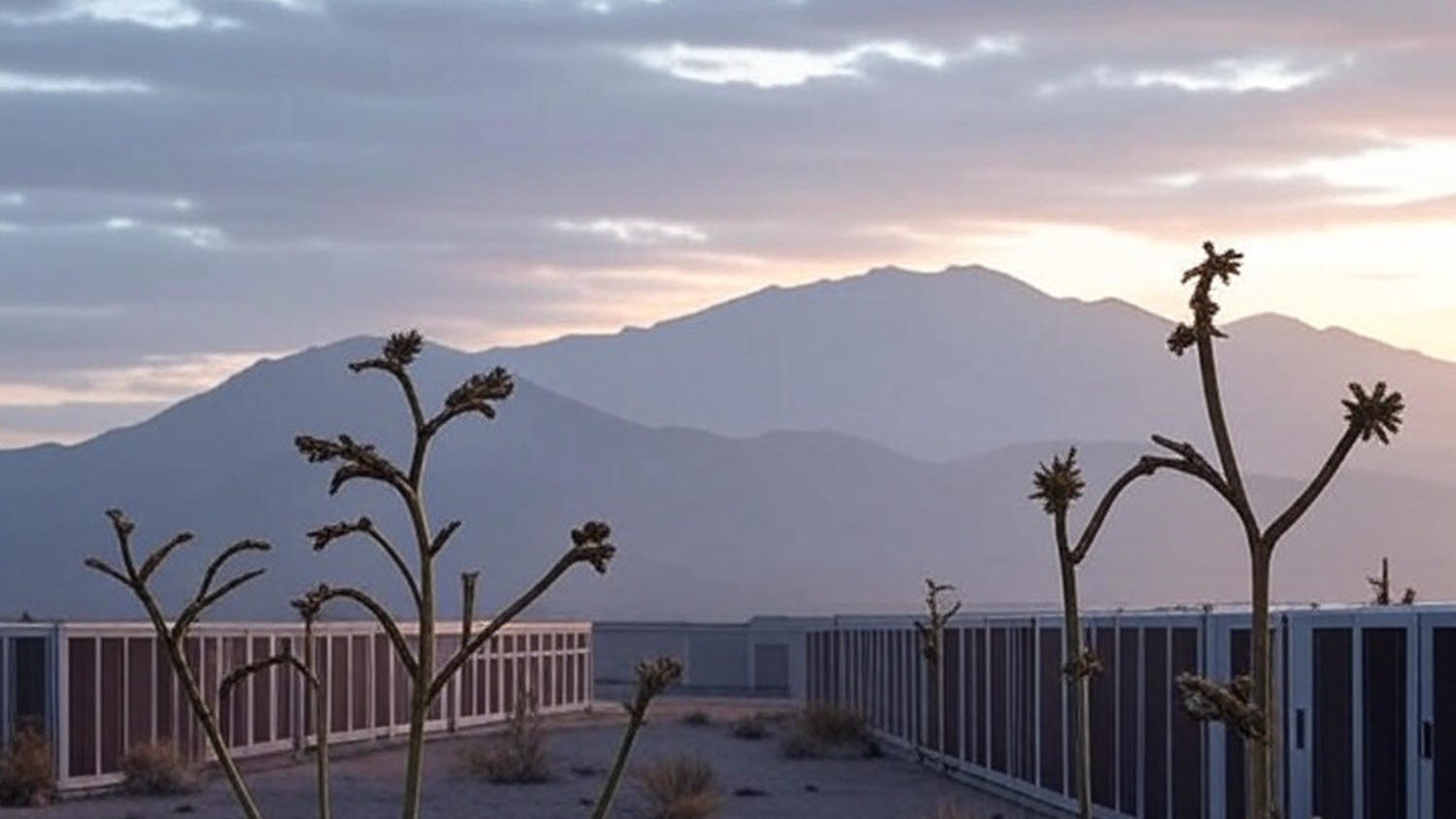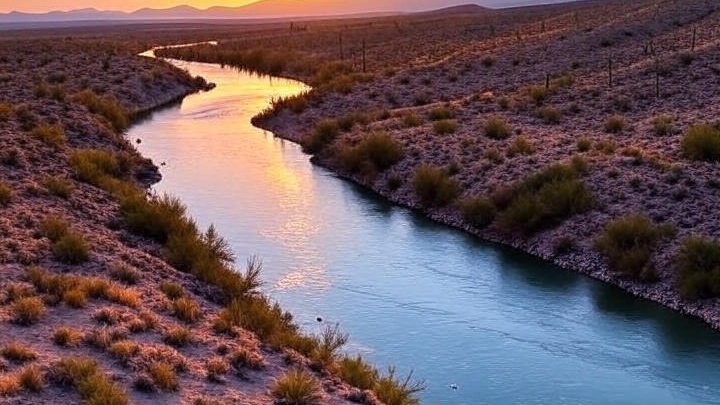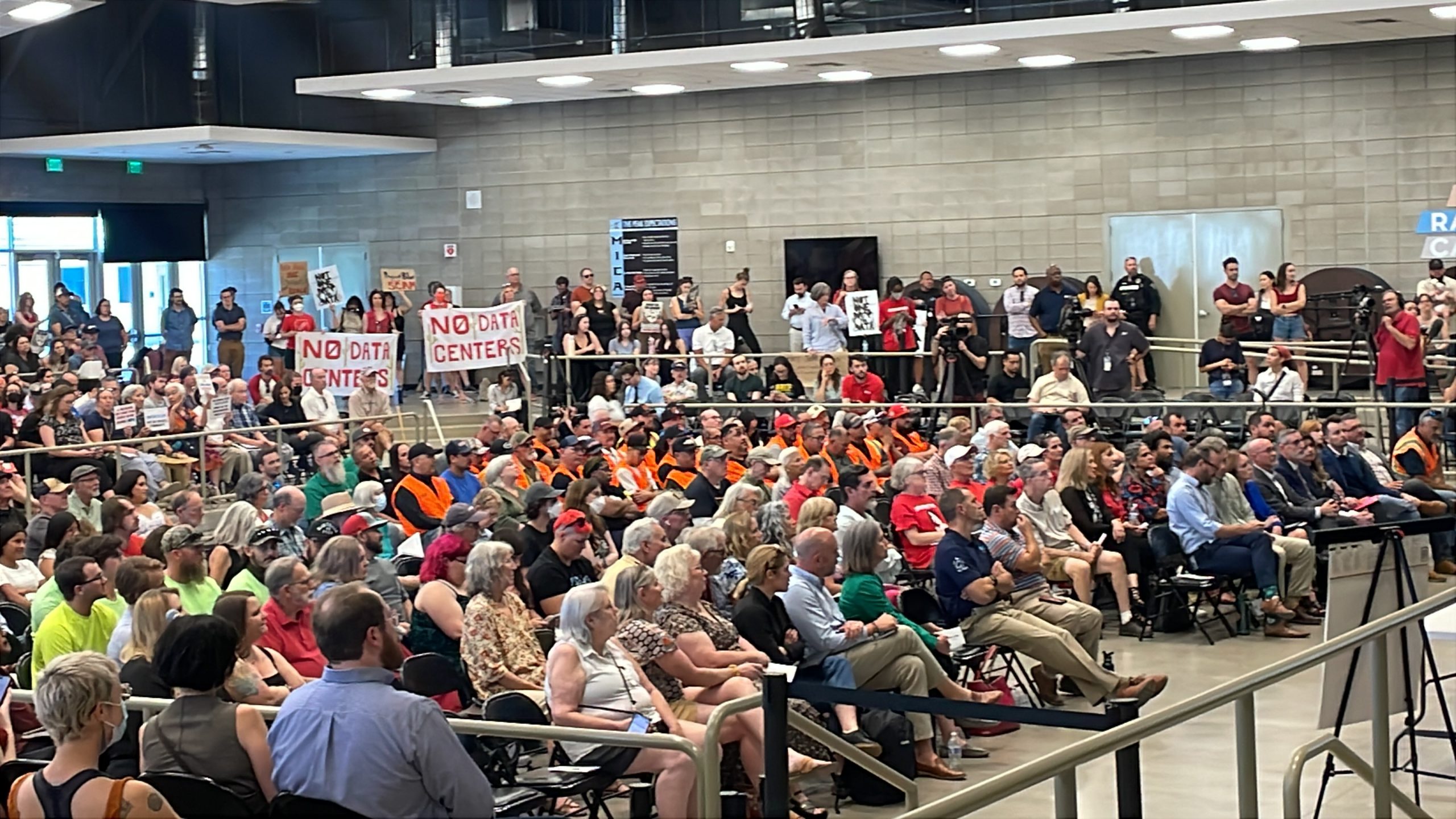
The Story
On June 17, 2025, the Pima County Board of Supervisors voted 3-2 to proceed with Project Blue, a $3.6 billion data center development project on Tucson’s southeast side.

Beale Infrastructure, led by Blue Owl Capital, is constructing the project.
While developers promise economic growth, their secretive approach contradicts lessons learned from other data centers.
Advanced planning through non-disclosure agreements has kept the public in the dark, a tactic often used to evade scrutiny.
As more details emerge, it’s unclear if this deal benefits the public.
Limited Details, Big Claims
Local officials share details about data centers that claim to achieve net-zero water and energy consumption by 2030, making them the only ones in the country to do so. However, the commitment is largely aspirational, with no specific details on how energy and water demand will be fulfilled or expanded. While some data centers, like Google’s, are making efforts to achieve net-zero water and power usage, no facility has been retrofitted to meet this goal.
The apparent facility planned with Project Blue is not designed to meet this objective either. If this data center were truly groundbreaking, we’d see engineering studies or environmental reports praising its development. Instead, we have vague promises from mega-corporate interests working in the shadows with unreliable local officials.
The Realities
These data centers, similar to others in the county, exploit cash-strapped communities for quick tax revenue, harming residents.
They’ll rely on grid power, necessitating TEP’s provision since the annexation into Tucson.
The site selection considers the grid’s reliability, though questionable, and the Southwest’s renewable energy production capabilities, though specific requirements are unclear.
Renewable energy fluctuates during peak demand and operates at night, likely drawing power from the grid during peak hours and paying more.
The project estimates a 2,000 acre-foot annual water consumption, based on current assumptions and assuming a full-scale build-out.
This is substantial, equivalent to sustaining four golf courses, powering homes, or providing access to 6,000 average residential homes.

The project claims to maximize reclaimed water, but we need more details.
Data centers primarily use forced liquid cooling or evaporative air cooling. Liquid-cooled systems reuse water but require extensive treatment, losing reclaimed water. Evaporative cooling systems are concerning.
Swamp coolers are effective in the desert heat but less efficient in extreme temperatures or cool weather. In a data center, cooling less is not an option. These systems rely on water vaporization, which inevitably leads to water loss unless in a perfectly sealed system. At full capacity, this data center could consume over 700,000 gallons of water daily.
The developer claims that renewable and grid sources will meet the energy demand, and they plan to use a developer-funded pipeline to supply reclaimed water. While these data centers may not directly conserve water, they exacerbate the high 5.5% annual increases since 2023, compounded by surcharges and fees imposed by Central Arizona Project.
Rural Tucson Water customers will face a 19% rate differential starting soon.
Given the dangerously low water levels in the Colorado River system, we must raise prices and reduce water usage. Why would we invite a water-intensive neighbor to join us in this predicament?

Power Struggles
Tucson faces several contentious TEP issues, including consecutive 14% rate increase proposals, mid-town power line construction, and the recent failure of the franchise agreement on the 2024 ballot. Despite serving 380 square miles and powering hundreds of thousands of people, Tucson continues to demand clean energy. TEP’s aspiration to achieve carbon neutrality by 2050 is commendable, but their lack of a clear strategy has led to escalating costs.
Tucsonans seek renewable energy, but TEP, owned by Fortis, the largest controller of Canadian natural gas exports and British Columbia production, has recently invested nearly five billion dollars in its BC natural gas export market. This investment may influence UNS’s energy blend, despite their stated goal of carbon neutrality by 2050.
Fortis, traded on both Canadian and US exchanges, holds significant investments from Vanguard and Fidelity. We’ll monitor public disclosures of elected officials for potential financial interests in these widely traded investment accounts.
In 2023, Fortis generated a net income of over $1.1 billion, primarily due to higher-than-expected revenue from UNS. In 2024, profits surpassed $1 billion, but growth slowed due to increased energy costs, which have resulted in recent rate increases.
The Big Deal
This development fits a pattern of corporate abuse, where mindless conglomerations take land for profits, leaving locals with adverse effects like higher bills and environmental risks.
Project Blue claims to capitalize on renewables and reclaimed water, but it’s potentially a scam. They’ll rely on the grid initially, with water offsets that lack enforcement.
This is likely why planners have used essentially zero of the recommendations made by other communities experiencing difficulties with their data centers.
Public scrutiny has revealed the project’s vulnerability, with opposition from residents and council members like Kevin Dahl.
Secrecy fueled organizing, and questions remain about the project’s real impacts. Tucson deserves transparency and true sustainability, not billionaire promises.
Contact your officials, attend meetings, and research the project. Notably a meeting will be held at Mica Mountain high at 10800 E Valencia Rd on July 23, 2025. This meeting will be live-streamed here.
While there are benefits, such as a local electrician’s trade union representative claims, simply gravitating to the highest potential project doesn’t benefit the community. Future projects will be hampered by water concerns.
This project is similar in size to a mid-size hospital or high school. Let’s build that instead, but that would require secret planning from special interests. We hope those special interests represent the people, but our politicians answer elsewhere. We have more information coming out on this.
Thanks for letting us take a crack at this story. Understand the facts and details yourself.
Take care, Tucson



Leave a Reply